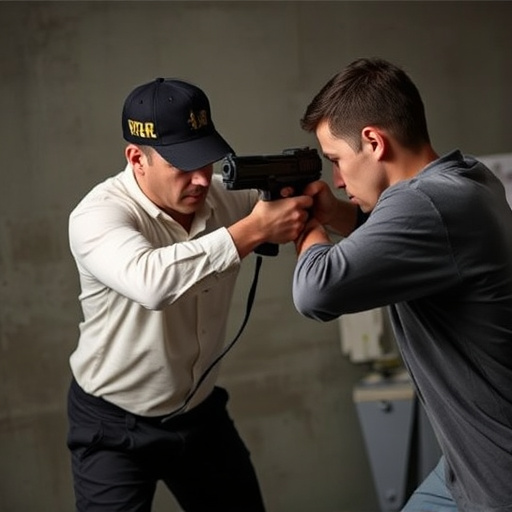The rising popularity of non-lethal stun guns purchased online raises concerns about misuse and accessibility. While offering personal safety, their low-voltage features can bypass security systems, prompting a need for advanced detection technology to differentiate legal self-defense tools from weapons, ensuring responsible use in a complex regulatory landscape.
In today’s digital age, the accessibility of non-lethal stun guns via online sales has surged, raising new safety concerns. As these devices become more ubiquitous, detection technologies are also evolving, posing challenges for law enforcement and public safety. This article delves into the rising trend of online stun gun sales, explores privacy implications, and discusses strategies to balance safety and access while addressing detection gaps in an increasingly digital landscape.
- Rise of Non-Lethal Stun Guns in Online Sales
- Privacy Concerns: Detection Technologies Advancing
- Balancing Safety and Access: Addressing Detection Gaps
Rise of Non-Lethal Stun Guns in Online Sales

The accessibility and popularity of non-lethal stun guns have skyrocketed in recent years, largely driven by their availability for purchase online. This surge in sales is attributed to growing concerns about personal safety, especially among individuals seeking self-defense options that are less lethal than firearms. E-commerce platforms offer a wide array of stun devices with varying voltage levels and designs, making them easily accessible to a broader audience.
The convenience of online shopping has contributed significantly to the spread of non-lethal stun guns, allowing buyers to purchase these items from the comfort of their homes without strict background checks or in-person inspections typically required at physical stores. While this accessibility brings advantages for personal safety enthusiasts, it also raises concerns about misuse and the potential for these devices to fall into the wrong hands.
Privacy Concerns: Detection Technologies Advancing

As non-lethal stun guns become more readily available online, privacy concerns are on the rise. These concealed devices, designed to temporarily incapacitate individuals, raise ethical questions about personal safety versus the potential for abuse and unintended consequences. Advanced detection technologies are constantly evolving, making it increasingly difficult to identify and regulate their use.
The ability to conceal stun guns and the growing sophistication of detection methods create a complex scenario. While stun guns offer an alternative to deadly force, their increasing popularity and accessibility spark debates about who can possess them and where they can be used. As technology advances, so does the need for stringent regulations and public awareness to ensure these devices are used responsibly.
Balancing Safety and Access: Addressing Detection Gaps

Balancing safety and access is a delicate act, especially when it comes to non-lethal stun guns available online. While the primary concern is ensuring public safety by detecting and deterring potential threats, the accessibility of these devices for self-defense raises valid points. The challenge lies in creating a robust detection system that doesn’t hinder legal owners’ ability to protect themselves.
Gaps in current detection methods have sparked discussions. For instance, some stun guns may not trigger alarms due to their low voltage or unique activation mechanisms, slipping through security measures. This highlights the need for technology that can differentiate between legitimate self-defense tools and actual weapons, ensuring only harmful devices are impeded while allowing peaceful citizens to carry non-lethal options for protection.
As the market for non-lethal stun guns continues to grow, with an increasing number of these devices available for online purchase, it’s crucial to address the emerging concern of concealed weapon detection. Privacy advocates balance this against public safety needs, highlighting the importance of bridging detection gaps. In light of these considerations, both regulatory clarity and technological advancements are necessary to ensure that individuals can enjoy their right to self-defense while maintaining a safe and secure society, especially in today’s digital age where detection technologies are rapidly evolving.
